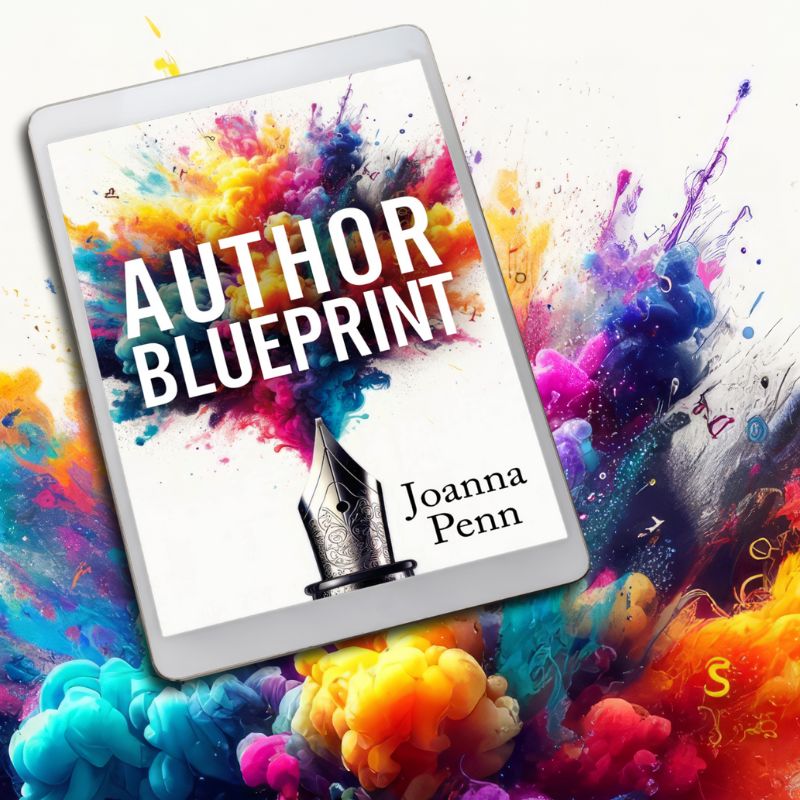OLD POST ALERT! This is an older post and although you might find some useful tips, any technical or publishing information is likely to be out of date. Please click on Start Here on the menu bar above to find links to my most useful articles, videos and podcast. Thanks and happy writing! – Joanna Penn

Today we're focusing on the various business models that authors can use to generate revenue and satisfy customers.
Of course, many authors have day jobs which is a great way to pay the bills and writing can then be for fun or extra income, but this article is aimed at authors who are intent on going full-time in this business.
Why do you need to define your business model?
Defining your business model can help keep you focused. Opportunities expand as your profile grows and keeping your business model top of mind can help you say no to things that distract you. [I need to remind myself of this all the time!]
For example, renowned indie author JA Konrath states, “I gave up on public appearances a few years ago, because of diminishing returns. They were indeed fun, but the cost and time away from writing wasn't worth it to me.”
My business model includes professional speaking as well as being an author, but recently I have started to turn down speaking work in order to focus more on the writing and only taking interesting speaking events, like Sweden in September. I'll be sharing my business plan at some point soon, but in considering where to focus my efforts, these were the most common business models I discovered – and some people mix and match between them.
Business model 1: Non-fiction books with info products, speaking and consulting
Many non-fiction authors make more money from the ‘back-end' of their books, rather than from book sales alone. This includes information product sales, professional speaking and consulting/coaching services. The book acts more as a business card as well as providing qualified leads and kudos for the author. The book itself doesn't need to make any money – it's the other services available that are more important for cashflow.

A more authentic example is Chris Brogan, author of ‘The Freaks Shall Inherit The Earth,' and other books. Chris is a highly paid professional speaker, consults for large corporates on marketing, as well as producing Owner magazine and online training courses for bloggers. In terms of indies, Jim Kukral of Author Marketing Club also primarily uses this model, providing author services, consulting and professional speaking as well as writing non-fiction books.


If you're writing non-fiction, consider how you can turn that into other products to offer more to your customers.
Business model 2: High volume fiction
For self-published or hybrid fiction authors, the model of writing fast and publishing often has become mainstream in the last few years.
It's not a new model, as it reflects the way the pulp writers of the early 1900s wrote, producing massive amounts of escapist fiction on cheap ‘pulp' paper so the price could be kept low. [It does not mean the writing was bad!]

This same phenomenon has emerged since ebooks went mainstream. A good indie example is H.M.Ward, who releases romance novellas every few weeks and has sold over 4 million books, as well as hitting the New York Times bestseller list 11 times in 2013. Some authors are achieving this through collaboration, for example Sean Platt writes with David Wright in the Collective Inkwell, and Sean also writes with Johnny B. Truant for Realm and Sands books. Together they produce an enormously varied number of series and a lot of books a year!

Isaac Asimov wrote over 500 books in his lifetime, Enid Blyton wrote over 600, Barbara Cartland over 700. Prolific authors still creating at a ferocious pace for their traditional publishers include R.L.Stine, the bestselling children's author of all time, who has been known to write several books a month. There's also Nora Roberts, who also writes under J.D.Robb and who writes a book every 45 days, writing 8 hours a day.
So ignore the people who say that writing fast means the writing is terrible! It's just one way of doing things.
Business model 3: Sporadic books with teaching/speaking/freelance writing
Of course, not everyone wants to write books at such a prolific pace, and literary writers in particular don't work at this fast pace.

So the business model for literary writers is usually to combine writing with teaching creative writing, applying for grants and prizes, or with another writing career like journalism or freelance writing. If you take a look at the prestigious Iowa Writer's Workshop faculty, you will see famous literary writers and poets like Simon Armitage, Ian McEwan, John Irving and more, who make money through teaching as well as writing.
What business model are you aiming for?

Of course, these business models can be combined and my own is a combination of all of these right now. I receive income from the sales of fiction and non-fiction books, from the sale of online training courses, professional speaking and also affiliate income from my blog. There are no rules and this is a mix'n'match game!
Want more on business for authors? Check out the book, Business for Authors: How to be an Author Entrepreneur
Do you have any questions or comments, or can you think of any other business models? Please join the conversation and add a comment below.
Top image: money rose from Flickr Creative Commons from K.L., teaching from Temari 09


At the end, you included “affiliate income from blogs”, as your own source of income. I think all authors should explore that – it works quite well if explored with zest and determination. Only, it may not work that well in the literary genre.
You definitely need to have an audience and traffic for affiliate income to work, but it is a good extra income stream if you have those. But only for things you believe in IMHO!
Great post. I aim for high volume fiction. That means different things for different authors, but for me, it means two to four books a year while I have a job. Any of these models takes courage and sacrifice to be successful. I’m guessing that two to four books a year won’t pay the bills until I get some traction and earn my audience. It seems earning a large audience is the business move you have to make before any model works.
I’m interested to see what others define as high volume.
That’s pretty high volume when you have a job as well – I would say that your business model right now is the day job though, and you’re building up to a point of being able to live off high volume fiction, or some combination of the two 🙂
I need to share this with my partner. I’m in the high output fiction camp and she’s more of the low volume/teaching camp. Now that I think about it, we may be a perfect combination. Love love love your blog and podcast, Joanna. Sorry I don’t reply more often. Too busy writing! God bless.
Hi Ron, thanks for commenting – and I don’t expect people to respond really 🙂 But it’s lovely when I hear that articles or podcasts are resonating! Happy writing weekend!
What about those who focus on Kindle Worlds and write mostly for that and make full-time income from writing? Could be another business model?
I’d say that fits under high volume fiction. It’s a great new opportunity, for sure.
Probably, yeah. I think there is another one I’m forgetting but can’t put my finger on it! 🙂
Thank you.
I needed this, and I did not know I needed it until you posted it.
Thank you again.
I am just redesigning my website redesign, so this was a really good reminder to add something about public speaking. I’ve been getting such good feedback recently that it’s time I started to charge. In factm I came away from both of my events this week with requests to run paid workshops. I now completely appreciate what you say about factoring in rest time around speaking gigs. Suffering from burn-out this week. I think it’s the come-down after the adrenilin rush, but I also lost my voice.
All the best with the speaking, Jane – and yes, remember to schedule downtime in between things 🙂 I still need to learn this lesson myself!
Joanna – this post really helps. Honestly, my business model is still morphing. I’m creating an online class on How to Find Your Voice, and Life Coaching, but I’m still writing fiction because I just love it 🙂 But this really helps me get some clarity! Thanks for adding the links too.
I like the distinction between fitting in writing around an unrelated day job, and having a somehow-related side gig that supplements the writing (your business model 3). That’s the model that I see myself aiming for. I don’t often see people making that distinction; it’s either you write full-time and do nothing else, or you have a day job, and that’s somehow not good enough.
Hi Alice,
Never think that having a day job isn’t good enough – most writers have day jobs 🙂 It’s whatever we need to do to keep the bills paid and our needs taken care of, so we can then focus on creativity. I hated my day job so I was keen to give it up, but the entrepreneurial life is not for everyone – so just do what makes you happy and keeps the food on the table!
Business model 2 is the one I’m striving for. Thanks for the reminder that I need to really get cranking on writing and publishing more books! 🙂
I started writing my main series a little over ten years ago. Thanks to the way I can jump between books and scenes (as well as sitting down and doing huge chunks in order if needed), I have quite the backlog of books both finished or in the process of being finished. I had planned and tried to get published in the traditional manner, but as the change in Ebooks helped improve things for writers, and because I like more control, I decided this year to focus on indie publishing, and to forget aiming for the traditional publishing method.
I’m definitely working with the idea of mixing both high volume fiction content with public appearances at upper schools, collages and maybe one or two universities (no idea if the unis will have a self-published writer come to chat). Blog tours, email lists, G+ Hangouts and Podcasts are probably going to be something I start soon.
Interesting stuff, Joanna– thanks! I’ll have to look at the other posts in the series.
I must be a hybrid, as I’m working a day job part-time, and using the half-time freedom to try putting out one book a year- first a mystery, then a YA, then a literary fiction… I think I need the experimentation to find out where I fit best. And here I was thinking a book a year was pretty quick! lol Hoping to evolve into full-time writing, but not ready for it yet…
Great post! In answer to your question at the end, I am aiming to basically publish “God-revealed fiction” and give my readers TIME to find them. I simply refuse to be an overworked octopus all in the name of money. I have a vision for my two series and believe God it will come to pass in TIME. That seems to be a profane word these days. The stars with staying power didn’t arrive there overnight. The fame and fortune occurred with passion, hard work, good business managers and TIME.
Thanks for this, Joanna – a very clear summary of the options out there. I read a book a few years ago that talked about the concept of an “umbrella career”, meaning a day job that still makes use of your writing gifts and talents, and allows you the flexibility to write. It seems that many author-entrepreneurs are using a mix of book sales, speaking, blogging, and teaching to create their own personal umbrella careers. It’s a really exciting time for this, since I think the tools and society are finally catching up to this idea.
I’ll make sure to tweet about this – really helpful article!
I was particularly interested in the info early on about Konrath cutting out appearances. Just last night at an authors’ fair I met a pretty successful mystery author who said she was cutting back on appearances because they actually cost more money than she takes in doing them.
And, yes, this is a great post.
In my experience, personal appearances always cost more than the takings on the day. Like social media and everything else we writers do in addition to getting the words on the page. It is about the long-term gain (and the joy of meeting readers). Comparing travel costs with books sales can be depressing, but I often get a spike in e-book sales a few days afterwards.
Thank you for all the insight you provide, Joanna.
I don’t like the serial release style so I have a loose plan to build my reader base through individual digital short stories and novellas. These would either be free, or 0.99, with the hope that the exposure would eventually get my full-length novels in front of more eyes.
Here’s the conundrum. We all agree that a good digital book cover is important and is worth paying for. However it seems cost-prohibitive to pay $200-$300/each for 5 or 10 individual short story covers which are selling for very cheap or are free.
In the case of short stories, is it permissible to have the same cover with only changes to text? Are there lower cost solutions to cover design that still look good for indie releases? Thanks again for all you do.
I had no idea some authors release a book every few weeks! I am definitely going to explore this
Check out the romance and erotica writers like HM Ward and Jasinda Wilder – they work so hard!
Thanks, Joanna. Yeah, they’re impressive. Can’t help but wonder, how do they manage the editing process so quickly? I mean, do they have a dedicated team of editors or do they edit themselves?
I am really intrigued by this, too, Rosemary. I can believe that some authors can churn out the words, but they must be well in advance of their release schedule in order to have time for editing, proofreading, formatting etc.
Yeah that makes sense, Nathan. These authors must be working tirelessly just like Joanna said earlier. Definitely something to think about…
As always, very honest and informative. The information I’ve gained through your books and helpful website, plus the helpful advice you’ve personally given, in response to my emails, as helped me along my own author/entrepreneur journey.
Thank you and I look forward to continuing my learning journey.
Chris Maylor
http://www.journeymanguides.co.uk